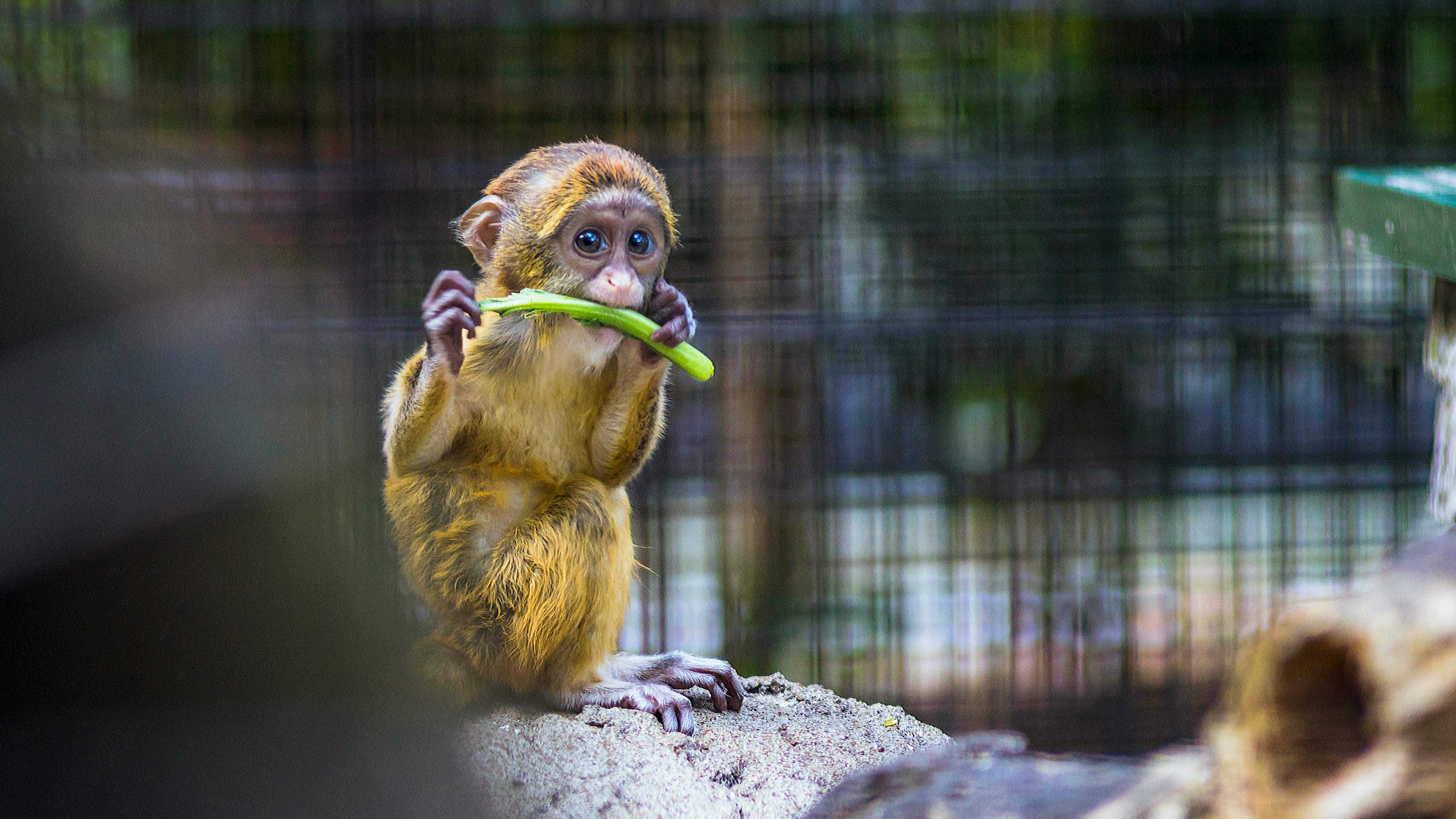Farro is a versatile grain that has a nutty flavor and chewy texture. It is becoming increasingly popular among health-conscious individuals, and can be used in many different dishes. It is also gaining popularity as a food for babies, as it is packed with nutrients and can be easily incorporated into meals for little ones. In this article, we will discuss whether or not babies can eat farro and the health benefits of adding this nutritious grain to their diet.Yes, babies can eat farro. Farro is a type of whole grain that is packed with nutrition and is safe for babies to eat. It can be cooked and served as a side dish, added to soups or casseroles, or blended into porridge. Farro has a nutty flavor and chewy texture that babies often enjoy.
The Benefits of Farro for Babies
Farro is a whole grain cereal, making it an excellent choice for babies. It is packed with essential nutrients and vitamins that are important to your baby’s growth and development. Farro is also low in fat and high in fiber, which can help keep them regular and promote healthy digestion.
Farro is also packed with essential amino acids, which are important for healthy muscle growth and development. As a result, farro can be a great source of protein for your baby as they grow. It is also rich in B vitamins, such as thiamin, riboflavin, niacin, folate, and vitamin B6. These vitamins are essential for brain development and energy production.
In addition to the nutrients mentioned above, farro is also high in minerals such as zinc, iron, calcium, magnesium and potassium. Zinc helps with immune system function while iron helps with red blood cell production. Calcium is important for bone growth while magnesium helps with nerve development and muscle contractions. Potassium helps regulate blood pressure and fluid balance in the body.
Farro also contains antioxidants that can help protect against cell damage caused by free radicals. This can help keep your baby healthy by protecting them from illnesses and disease. Farro can also be helpful in preventing constipation due to its high fiber content. The high fiber content can also help keep your baby feeling full longer so they won’t be as tempted to snack between meals or between feeding sessions at night.
Overall, farro is an excellent food choice for babies due to its rich nutrient content and high fiber content. Not only will it provide them with essential vitamins and minerals but it will also help keep them regular and feeling full longer which can prevent unhealthy snacking habits from developing early on in life.
Nutritional Value of Farro
Farro is a type of wheat grain that is becoming increasingly popular in the health food industry. It has a nutty flavor and chewy texture, making it an excellent alternative to other grains like rice and quinoa. Farro is also known for its high nutritional value, offering an array of essential vitamins and minerals.
One serving of farro provides one-third of your daily recommended intake of fiber. This fiber not only helps prevent constipation, but also helps lower cholesterol levels and can help keep you feeling full longer. Farro is also a good source of several B vitamins, including thiamin, riboflavin, niacin, and folate. These vitamins are important for energy production and metabolism, as well as healthy skin and hair.
Farro is an excellent source of several minerals including iron, magnesium, phosphorus, zinc, manganese, and selenium. Iron helps transport oxygen throughout the body while magnesium helps regulate blood sugar levels and plays a role in muscle contraction. Phosphorus supports healthy bones and teeth while zinc supports the immune system and helps with wound healing. Manganese aids in energy production while selenium acts as an antioxidant to protect cells from damage caused by free radicals.
Overall, farro offers a wide range of nutritional benefits that can support a healthy diet. It’s high in fiber to help support digestion as well as important vitamins and minerals to support metabolism and overall health. Plus it has a great flavor that can be used in all sorts of dishes!
Farro: A Nutritious and Tasty Food for Babies
Farro is an ancient grain, which is prized for its nutrition and taste. It is a whole grain that is high in fiber, protein, and minerals. Farro is also low in fat and cholesterol, making it a great choice for babies as they start to explore solid foods. It has a mild nutty flavor that babies will love. Plus, it can be cooked in a variety of ways to make delicious meals for the entire family.
Health Benefits of Farro
Farro is packed with essential vitamins and minerals that are important for babies’ growth and development. It contains vitamins B1, B2, B6, E, potassium, magnesium, phosphorus, zinc, iron, fiber and protein. These nutrients help support healthy bones and muscles and encourage healthy digestion. Farro also contains antioxidants that help protect against illnesses such as colds and flu.
Serving Suggestions for Babies Eating Farro
When introducing farro to your baby’s diet it is important to start slowly with small amounts of cooked farro mixed into purees or cereals. Cooked farro can also be served as an accompaniment to your baby’s favorite vegetables or proteins such as chicken or fish. As your baby grows you can start experimenting with different recipes by adding different vegetables or herbs to the farro mix. You can even try adding small pieces of cooked farro to soups or stews for added texture.
For older babies you can serve cooked faro with yogurt or cottage cheese as a snack or breakfast dish. You can also add cooked faro to muffin recipes or pancakes for added flavor and nutrition. Faro can also be used in place of rice in risotto recipes or combined with beans to make tasty salads or side dishes. There are so many delicious ways you can serve faro to your baby!
Age Considerations For Feeding Farro to Babies
Farro is a type of ancient grain that is becoming increasingly popular in baby food. It is high in fiber, B vitamins, minerals, and protein, making it an excellent choice for babies who are transitioning to solid foods. However, it is important to consider the age of your baby before introducing farro into their diet.
Babies between 4 and 6 months old should start with pureed vegetables and fruits before introducing grains like farro. Once they are ready to try grains, you may want to start with a single-grain cereal such as rice cereal or oatmeal before introducing farro. This will help them adjust to the texture of grains and help ensure that they do not have any adverse reactions.
Once your baby is 7 months old or older, you can begin introducing farro into their diet. Start by offering a few teaspoons of cooked farro mixed with breast milk or formula. If your baby tolerates this well, you can gradually increase the amount over time. It is important to ensure that the farro is cooked thoroughly and cooled before serving it to your baby.
If your baby has any adverse reactions such as constipation, diarrhea, gas, or belly pain after eating farro, stop feeding them the grain and consult with your pediatrician. Some babies may have sensitivities or allergies to certain grains like faro, so it’s best to be cautious when introducing new foods into their diets.
Overall, farro can be a great addition to your baby’s diet once they reach 7 months old if they tolerate it well. Just make sure that you introduce it slowly and watch for signs of an allergic reaction or digestive upset before serving larger portions.

How to Prepare Farro for Babies
Farro is a nutritious and healthy whole grain that can be easily added to your baby’s diet. It is a great source of fiber, protein, and vitamins and minerals such as iron, zinc, magnesium, folate, and more. Farro is also gluten-free and easy to digest, making it a good choice for babies with food allergies or sensitivities. Here are some tips for preparing farro for your baby.
The first step in preparing farro for babies is to rinse it thoroughly. This will remove any dirt or debris that may be on the grains. Once rinsed, you can either soak the farro overnight or cook it without soaking. If you choose to soak the farro overnight, make sure to use plenty of cold water so that all the grains are fully submerged. This will help ensure that the farro cooks evenly and quickly.
Once you have soaked or rinsed the farro, put it in a pot with enough water to cover all the grains by at least an inch or two. Bring the water to a boil over high heat and then reduce the heat to low so that it simmers gently. Cook until all of the grains are tender but not mushy (this usually takes about 15-20 minutes).
Once cooked, strain off any excess liquid and transfer the farro into a bowl or container until ready to serve. You can add some seasoning if desired such as garlic powder, onion powder, salt, pepper, herbs, etc. For babies 6 months+, you can also add some vegetables such as carrots or spinach or fruit such as apples or pears for extra flavor and nutrition.
When ready to serve, simply spoon out some of the cooked farro onto your baby’s plate with some other foods such as pureed fruits or vegetables. You can also add a bit of broth if desired for extra flavor and moisture. Farro makes a great side dish for babies 8 months+ who are starting on solid foods!
What to Add to Farro To Enhance Nutrition For Babies
Farro is an ancient grain that is becoming more popular in today’s health-conscious diets. It is a great source of fiber, protein, and vitamins, and can be easily incorporated into a baby’s diet. However, there are some additional ingredients that can be added to farro to enhance its nutritional value for babies. Adding fruits, vegetables, legumes, nuts, and seeds can help make farro more nutrient-dense and provide additional benefits for growing babies.
Fruits are an excellent source of vitamins and minerals that are important for a baby’s growth and development. Adding chopped fruit to cooked farro provides essential nutrients like potassium and vitamin C. Fruits like apples, bananas, blueberries, strawberries, kiwi, mangoes, etc., can all be added to cooked farro for added nutrition.
Vegetables are also an important part of a balanced diet for babies. Vegetables like carrots, sweet potatoes, squash, and spinach are rich in essential vitamins like A and C as well as minerals such as iron and calcium. These vegetables can be steamed or boiled before adding them to cooked farro for added nutrition.
Legumes such as lentils or chickpeas also make a great addition to cooked farro for babies. Legumes are high in protein and other essential nutrients such as folate, zinc, magnesium and fiber. They also provide additional texture when added to cooked farro which makes it easier for babies to eat them.
Nuts such as almonds or walnuts can also be added to cooked farro for extra nutrition. Nuts are packed with healthy fats and protein which helps support brain development in growing babies. They’re also rich in essential vitamins like B6 and folate which helps support overall health in infants.
Finally adding seeds like chia or flaxseed is another great way to add extra nutrition into cooked farro dishes for babies. Seeds are high in omega-3 fatty acids which play an important role in brain development during infancy. They’re also high in fiber which helps promote healthy digestion in young children.
Food Safety Tips When Feeding Farro To Babies
It is important to be aware of food safety tips when feeding farro to babies. Farro is a type of grain, and it can be a great addition to a baby’s diet. However, there are food safety considerations to take into account when introducing farro to a baby’s diet. Here are some tips to keep in mind when feeding farro to babies:
Firstly, it is important to make sure that the farro you are using has not been contaminated with any bacteria or other harmful substances. Check the packaging for expiration dates and any warnings before feeding it to your baby. You should also keep an eye on the texture and smell of the farro; if it appears or smells off in any way, discard it and do not feed it to your baby.
Secondly, make sure you are cooking the farro correctly before feeding it to your baby. Cooked farro should be soft and tender, not chewy or crunchy; if it is still hard after cooking, do not feed it to your baby as this could cause choking. Cooked farro should also be cooled before serving; hot food can burn a baby’s mouth and throat.
Thirdly, if you want to add flavourings or seasonings such as herbs or spices, make sure they are age-appropriate for your baby and that there are no added sugars or preservatives in them. You should also avoid adding salt or sugar when cooking the farro itself as this could be bad for your baby’s health.
Finally, never leave cooked farro out at room temperature for more than two hours; bacteria can quickly grow on cooked foods left out at room temperature. If you need to store leftovers, put them in an airtight container in the fridge or freezer right away; reheat them thoroughly before serving again.
By following these simple food safety tips when feeding farro to babies, you can ensure that your baby gets all the health benefits of this nutritious grain without compromising their safety.

Conclusion
Farro is an excellent grain to introduce to babies as a healthy and nutritious food option. It is a great source of fiber, protein, and essential vitamins and minerals. However, parents should be sure to cook the farro properly before feeding it to their babies in order to avoid any potential choking hazards. The health benefits of farro can help contribute to the overall development of your baby’s diet and ensure they are receiving all essential nutrients.
Overall, while there may be some possible choking hazards associated with introducing farro to babies, it can still be a valuable addition to their diet. With the right preparation and precautions taken, parents can rest assured that their little ones will enjoy the added health benefits of this tasty and nutritious grain.




